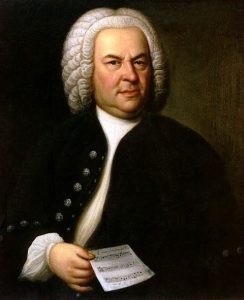Chapter 5: Classics and Classicism
Classic. What does the word make you think of? Do you use it casually? “Oh, yeah. Billy sleeping through class. Classic Billy!”
We use the word in a wide range of contexts. Classic novel. Classic movie. Classic car. Classic rock ‘n roll. ESPN classic. … Classic Coke?
 |
| Coca Cola Co. (ca. 1940). Refreshing Surprise. |
Classic versus Classical.
A Classic, then, is a top-quality example of a Genre. But consider a related but quite different term: classical.
 |
 |
| Haussmann, Elias Gottlieb. (1747) Portrait of Johann Sebastian Bach. Oil on canvas. | The Beatles. (1967). Album Cover. Sergeant Pepper’s Lonely Hearts Club Band. |
Bach. Sergeant Pepper. Both are classics, right? But are both Classical? Probably not. And it is not a question of quality. Sergeant Pepper changed the course of popular music. And one might attend a poor performance of a classical music program. No, the word Classical refers to a certain sort of artistic style associated with a particular context.
Picture the audience passing into a performance of classical music in an Orchestra Hall. What sort of image do you imagine? Men in formal suits. Women wearing evening dresses and sparkling diamonds. People of wealth and elegance. A social elite.
Classical artistic traditions are generally associated with aristocratic privilege. They appeal to sophisticated audiences with educated tastes and frames of reference. Indeed, they testify to the cultural superiority of the audiences that have the discernment to appreciate the fine arts and disdain the common entertainments of the lower classes.
Wow. Did you notice all the loaded terms of judgment in that last paragraph? Sophisticated. Educated. Taste. Discernment. Fine arts. Common. Lower classes. … Cultural superiority. Every one of those concepts is open to vigorous debate. Yet, somehow, classical tastes manage to imply the superiority of their art forms and the social context that produces them. Classical aesthetics affirm a privileged culture’s notions of its own superiority.
We are the elite. We are privileged, but we merit our advantages because our superior breeding has prepared us to appreciate the finest things in life. Our preferred art forms express our exalted views of the world in a style that matches our sophistication.
Classical stylistic traditions have emerged in many times and places. Do they have anything in common? Well, in terms of general values and orientations, yes. The concept of the Classical tends to be applied to …
- A Style valued persistently over time, often recalling a venerated past, a golden era
- Association with a social elite that imposes it values in an ideal of refined elegance
- A standard of excellence associated with order and harmony
- A style that, sometimes paradoxically, emphasizes highly developed virtuosity and discipline
- A mode of Expression that avoids emotion and communicates indirectly through Irony and suggestion
A Classical orientation is an example of a cultural aesthetic: a set of values regarding art, taste, and the subjective experience of beauty that is deeply rooted in the worldview of a given culture. Of course, many aesthetic traditions are rooted, not in classical cultures, but in folk or even oppressed cultural perspectives. And many great, Classic works of art are far from Classical. Indeed, Classical works can be insipid and formulaic. Nevertheless, association with a cultural elite can convey prestige on lesser works and great achievements can be dismissed for their low status.
Classical styles can arise in any era as an affirmation of a privileged culture. In this chapter, we will explore some examples and look closely at the tradition of the Classics that has had enormous influence in the development of Euro-American civilization.
Vital Questions
Context
Context is always a seminal concern in responding to art. In the case of a classical tradition, it is particularly crucial. One must recognize the relationship of classical works to a dominant social group, sensing the role they play in affirming its identity and privilege.
Content
Until we look at specifics, we cannot, of course, be very specific about content. We can note, however, that classical works will express the privileged group’s values and ideas in content and also in form.
Form
Classical works of art tend to employ highly developed virtuosity to achieve a style emphasizing discipline, order, harmony, emotional quietness, and ironic suggestion.
References
The Beatles. (1967). Album Cover. Sergeant Pepper’s Lonely Hearts Club Band. London, UK: EMI. Wikipedia https://en.wikipedia.org/wiki/File:Sgt._Pepper%27s_Lonely_Hearts_Club_Band.jpg
Coca Cola Co. (ca. 1940). Refreshing Surprise. [Advertisement]. Alan Brinkley (2004). Eyes of the Nation: A Visual History of the United States. Charlestown, MA: Bunker Hill Publishing. Jstor https://www.jstor.org/stable/community.14651378
Haussmann, Elias Gottlieb. (1747). Portrait of Johann Sebastian Bach [Painting, Copy]. Eisenach, Germany: Bach House. Wikimedia Commons https://commons.wikimedia.org/wiki/File:Elias_Gottlob_Haussmann_(1695-1774)_(after)_-_Johann_Sebastian_Bach_(1685%E2%80%931750)_-_BLWA_47_-_British_Library.jpg
A) an exemplar of excellence in a particular genre or tradition; B) an aes-thetic that features clarity, order, balance, symmetry, reason, mathematical precision; C) the ancient tradition of art, literature, and philosophy from classical Greece and Rome
a particular type of composition marked by expected, conventional features: e.g. Japanese haiku, Chinese landscape painting, Renaissance sonnet
A) an aesthetic valuing clarity, order, balance, unity, symmetry, and dignity, usually honoring a cultural tradition associated with some golden age of the past. B) in the Euro-American tradition, a reference to the works, styles, and themes of Greek and Roman antiquity.
a consistent pattern of choices regarding form and technique that comprise an identity for an artistic tradition, movement, or individual vision
content in art that projects the artist’s inner vision outward, often distorting the subject in “unrealistic” ways
an often wryly humorous, indirect mode of communication that asks the reader to compare what is said with some known or signified reference. Frequently used to puncture false pretentions, especially of the social elite. E.g. a standup comedian who relies on the audience to draw on what it knows about a celebrity to get the joke.
in the Euro-American tradition of education and scholarship, the study of the art, literature, and thought of ancient Greece and Rome (Latin)
